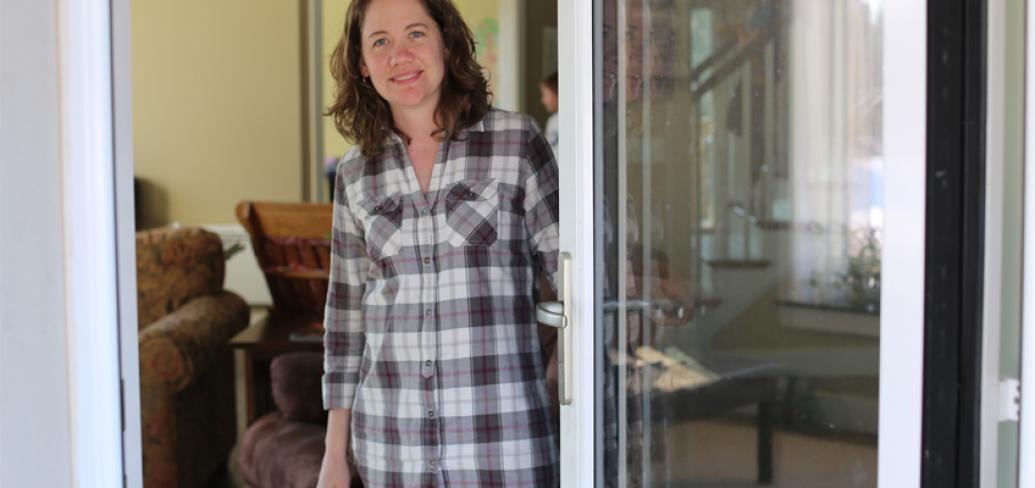Island’s first passive house is active energy saver

It would be tough to take a family of six out to dinner for $100, yet that’s all the Peters family paid to heat their house last year, and the year before that.
Their secret is in the design of Prince Edward Island’s first passive house, a 2,000-square-foot, two-storey home set on the family’s wooded acreage in Long River. Built to German energy efficiency standards in 2015, the house is airtight and heated entirely by the sun.
Passive houses are common in Europe but not North America, so when Beth and Ralph Peters decided to build a home that would reduce their family’s impact on the environment, they had to do some research. They found builder Terry Perry and his wife Natalie of Trout River Homes in MIllvale, who specialize in building passive homes based on the European standard.
“My husband and I care about the environment wanted to make as small a footprint as possible for our family of six,” Beth Peters said. “Considering we are a family of six, we wanted to minimize our impact.”
Instead of a furnace, a heat-recovery ventilator exchanges air and recovers 85 per cent of the heat that normally would be blown outside. The exterior walls are 22 inches thick and insulated with densely blown-in recycled newspaper. The windows, which were brought over from Ireland, are triple-paned and the frames are also well insulated.
There is just one tiny heater for the whole house, a 1,500-watt convection heater that uses about the same amount of energy as a hair dryer. The family only needs to use it after a few days without sun.
An energy monitor in the kitchen shows Beth and Ralph exactly how much energy they’re using at any given time. Beth monitors it closely and blogs about it for a worldwide audience of builders and environmentalists. She has also given lectures about her family’s experience designing and building their home hoping to inspire others to reduce their environmental footprint.
“The material costs are higher than conventional builds,” Peters said, “but in two years we have already saved about $7,000 in heating.”
Sometimes, even on a cold winter day, the house is so warm that they have to open the windows to cool it down. This usually only happens when the sun is lower in the spring and fall and bathes the house in direct sunlight.
It’s also a quiet building. Even with four children, a dog, and chickens in a nearby coop, there is no ambient noise in the house or clunks from a furnace or radiators.